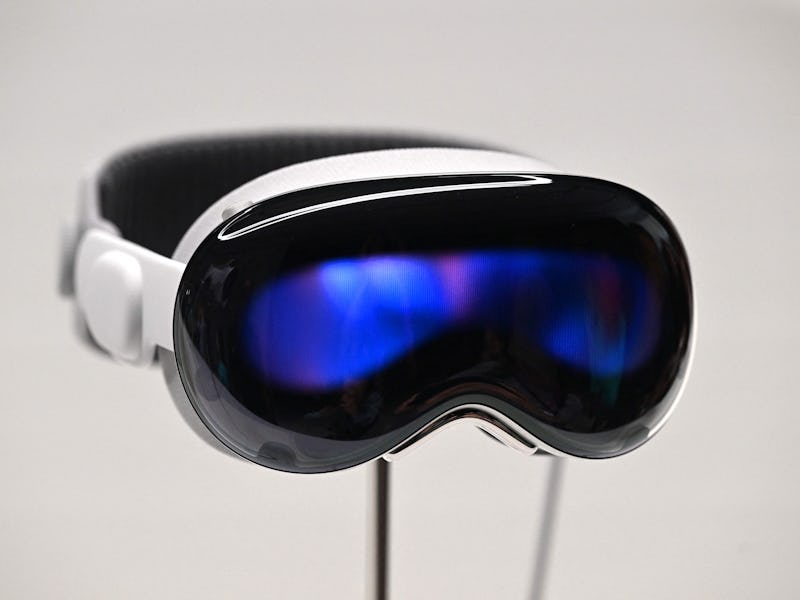The iPhone 15’s Spatial Video Just Made Apple’s Vision Pro a Lot More Compelling
If there's one company that can make 3D immersive content big, it's Apple.

Cutting-edge tech has a way of creeping up on you. One second it’s in the lab and the next it's in the code of every company that can fit the word “ChatGPT” into a press release.
For Apple, that quiet tech revolution is coming in a few ways. The first, is in the form of a $3,500 “spatial computer” called the Vision Pro. The second, at least by my estimation, just arrived with the announcement of the iPhone 15.
Let’s talk about spatial video.
Video, but make it spatial
If you missed, or even disregarded, Apple’s unveiling of spatial video on the iPhone 15, I couldn’t blame you. The idea is a bit of a head-scratcher without context. But just because those words (spatial video) don’t mean much to you now, doesn’t mean they won’t soon.
Though the details are still pretty slim, Apple says its new spatial video capability will let anyone with the latest iPhone capture 3D immersive content using their phone’s wide and ultrawide lenses — iPhone cameras have long been able to intake 3D information, which is how features like Portrait mode work. Once your video is captured, that’s where the Vision Pro comes in.
The iPhone 15 will bring the ability to create “spatial video” to the masses.
After you record your content (a touching family beach moment in Apple’s demo), you can then bust out your Vision Pro headset and watch the whole thing in (kind of) 3D. Naturally, Apple says users can share those immersive videos with fellow Vision Pro owners to help spread the joy.
Exactly how immersively 3D its spatial content will be is anyone’s guess — neither the feature nor the Vision Pro have shipped yet — but even without trying it myself, I can see just how pivotal the ability to record immersive content can be.
If VR is the future, it has to be both fun and useful. It also has to make a compelling case for why you should strap a headset to your face instead of just picking up your phone or flipping open your laptop. Theoretically, spatial video does all of these things.
Are you going to need to watch videos of your vacation in 3D on a several-thousand-dollar headset? No, you won’t. Are you going to want to do that? You just might. And god knows we need to make videos of our friends’ vacations compelling somehow.
While VR and AR are arguably bigger now than they’ve ever been, there are still quite a few limitations preventing them from being truly ascendant. For one, there’s hardware — headsets are often just too invasive and cumbersome to justify spending loads of time in.
But there’s also a content problem. We’ve written about the dearth of smash VR games and apps before, and since then it feels like that issue is in stasis. Anyone with an inbox full of $10 off VR games from Meta like myself knows VR gaming could use a little jolt.
But what if we didn’t have to wait around for developers, studios, and tech companies to invest and make the VR content we’ve been waiting for? What if — with the help of things like spatial video — we could just make the content ourselves?
Sure, not every experience in VR or AR can or should be user-generated, but as long as we’re sitting around twiddling our thumbs and waiting for more blockbuster VR experiences to arrive, being able to create a 3D or VR-like experience yourself should help keep us occupied — dare I say even entertained.
The final frontier
There’s still a long way to go before we can declare spatial video a revolution, but the fact that Apple has bothered to tether arguably its most important product — the iPhone — with the Vision Pro should tell you everything you need to know about how it views its expensive spatial computer.
If there’s one way to make something big, it's building it into the experience of the only smartphone that seems immune to phone-buying fatigue.
We’ll have an answer soon enough on whether the iPhone 15’s spatial video can actually create the compelling, immersive iOS ecosystem that Apple has envisioned for its Vision Pro. Spatial video is set to come later this year while the Vision Pro should arrive in the early months of 2024.
Until then we’ll just have to imagine what dynamic duos like spatial video and the Vision Pro can do and personally, my imagination is already running wild.
This article was originally published on